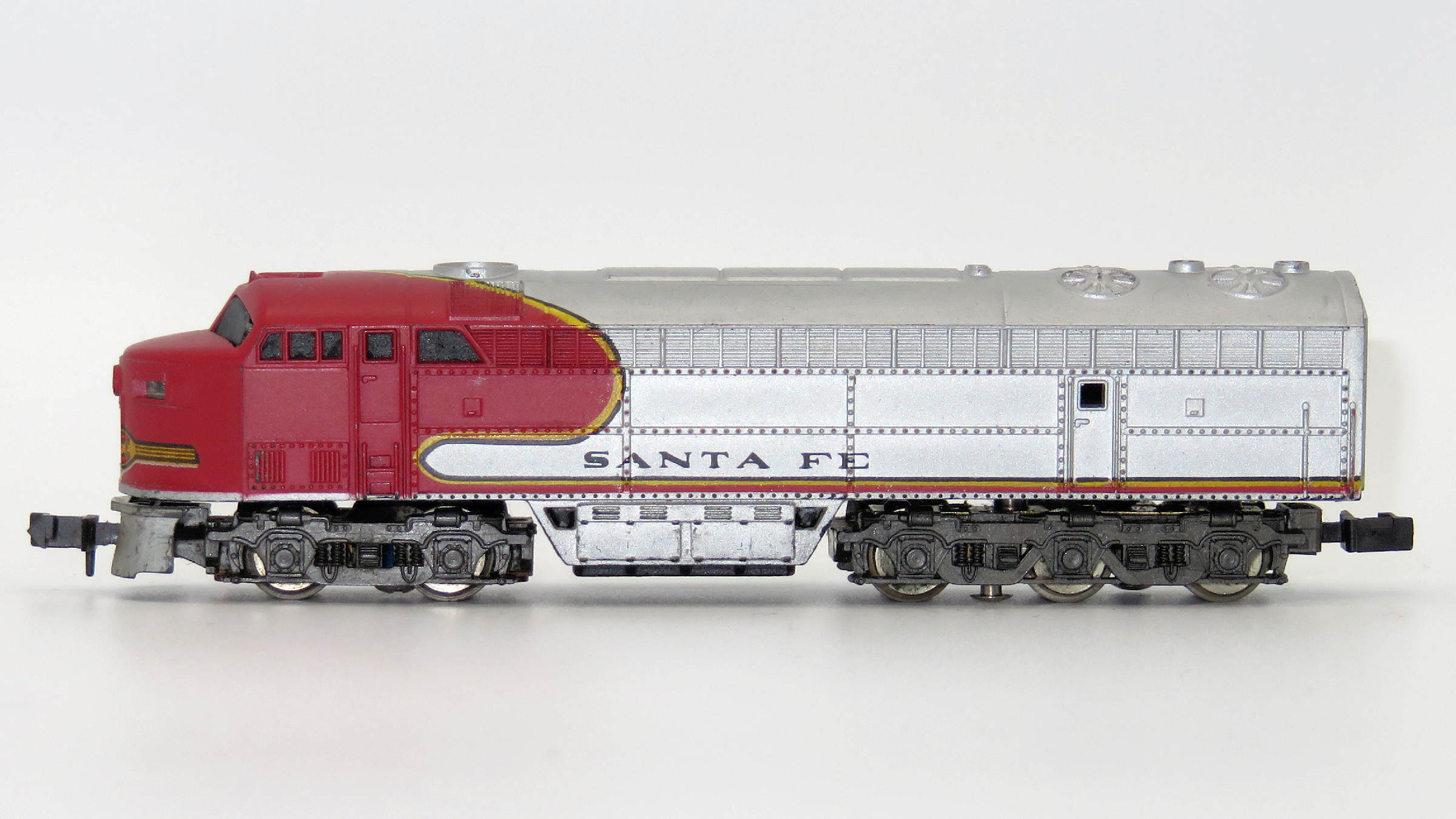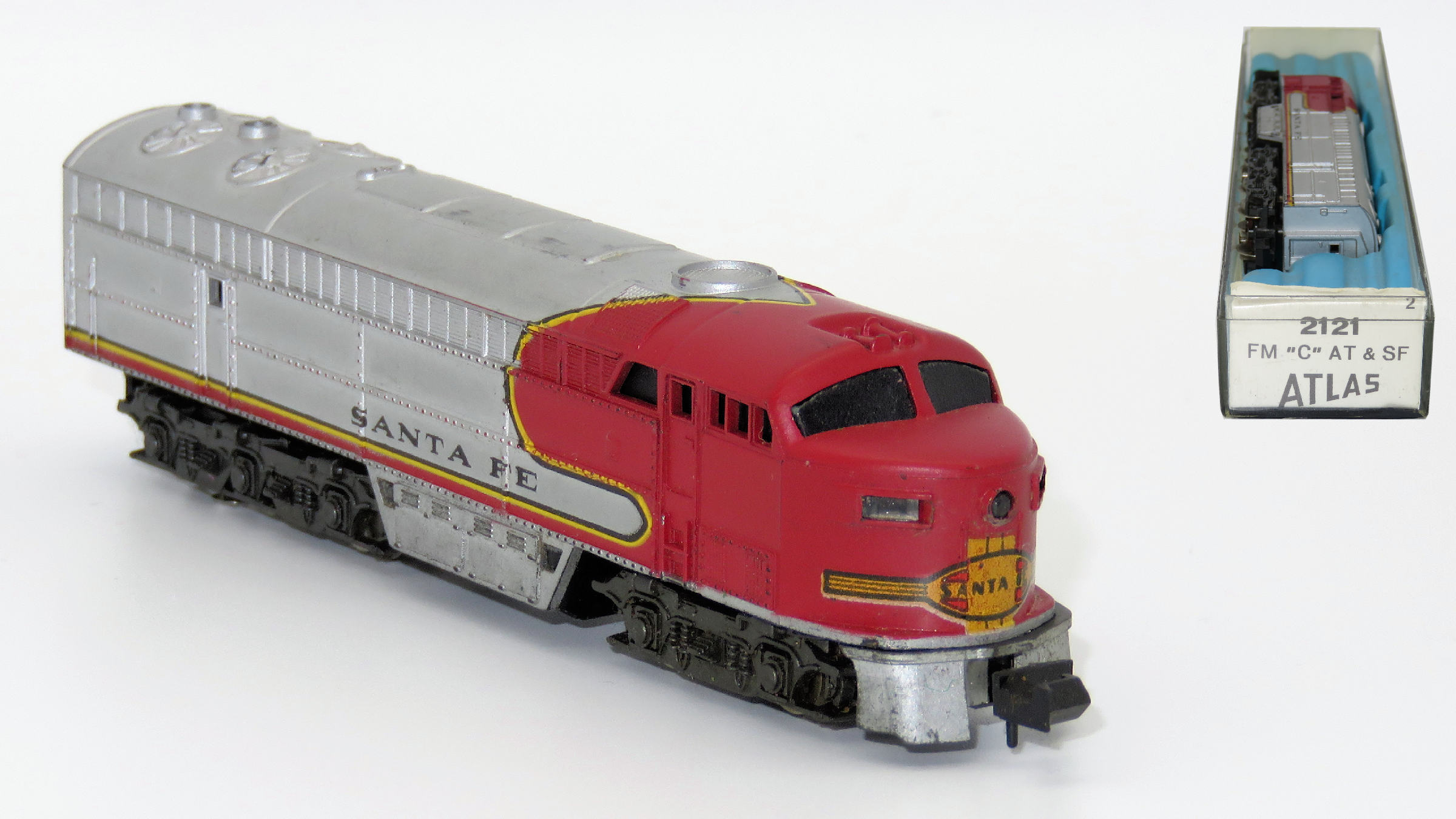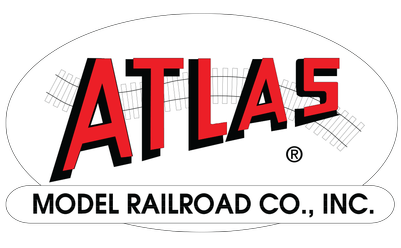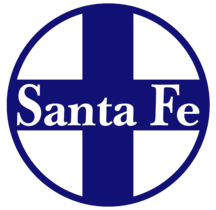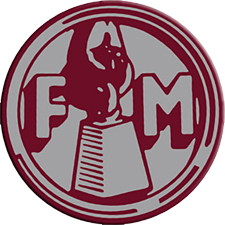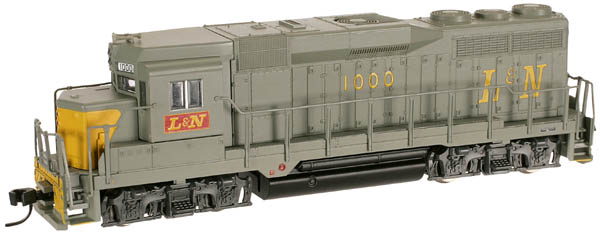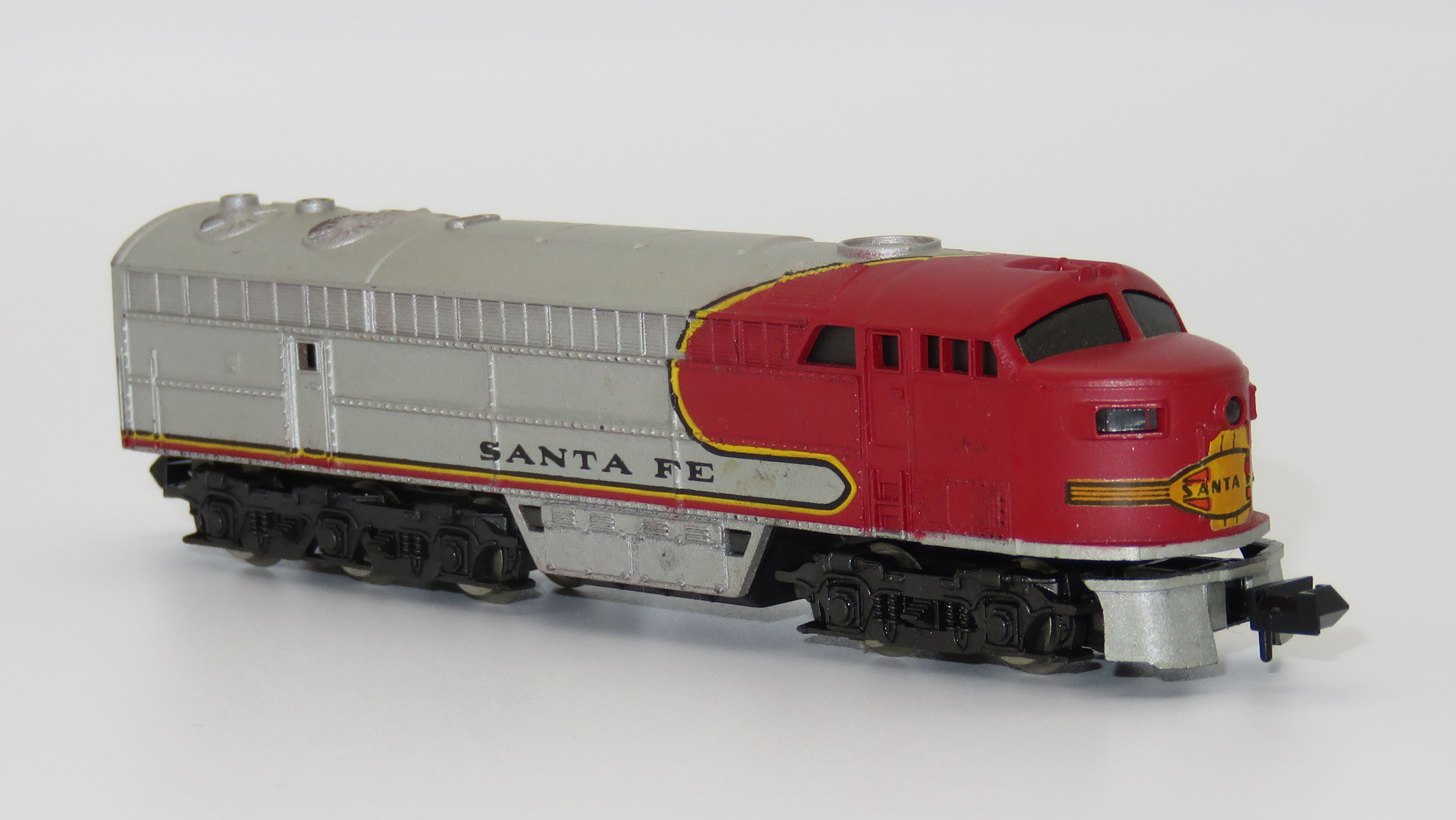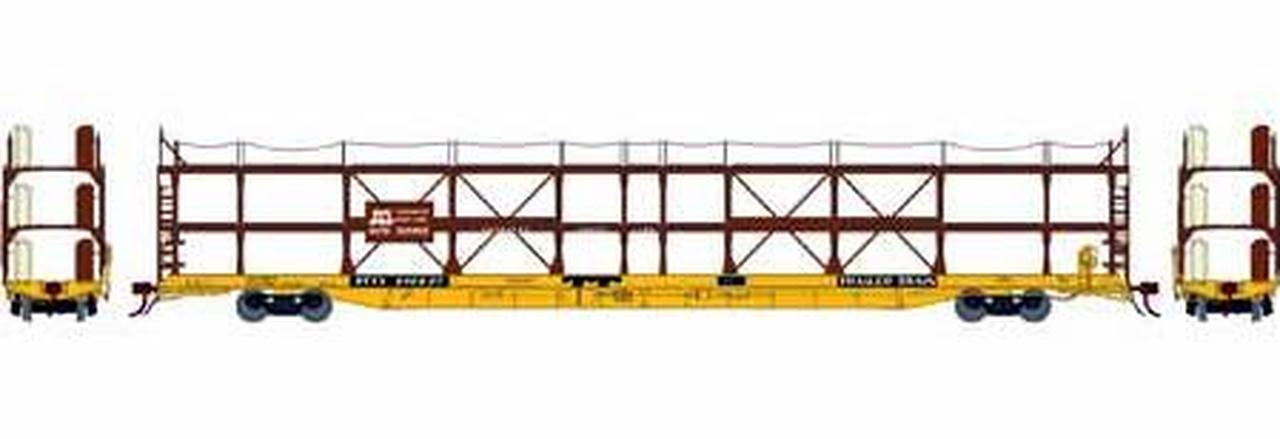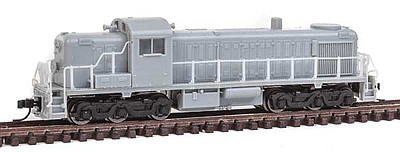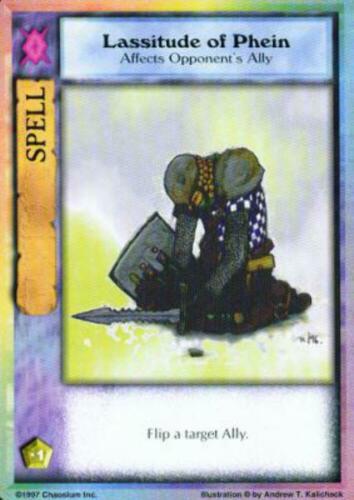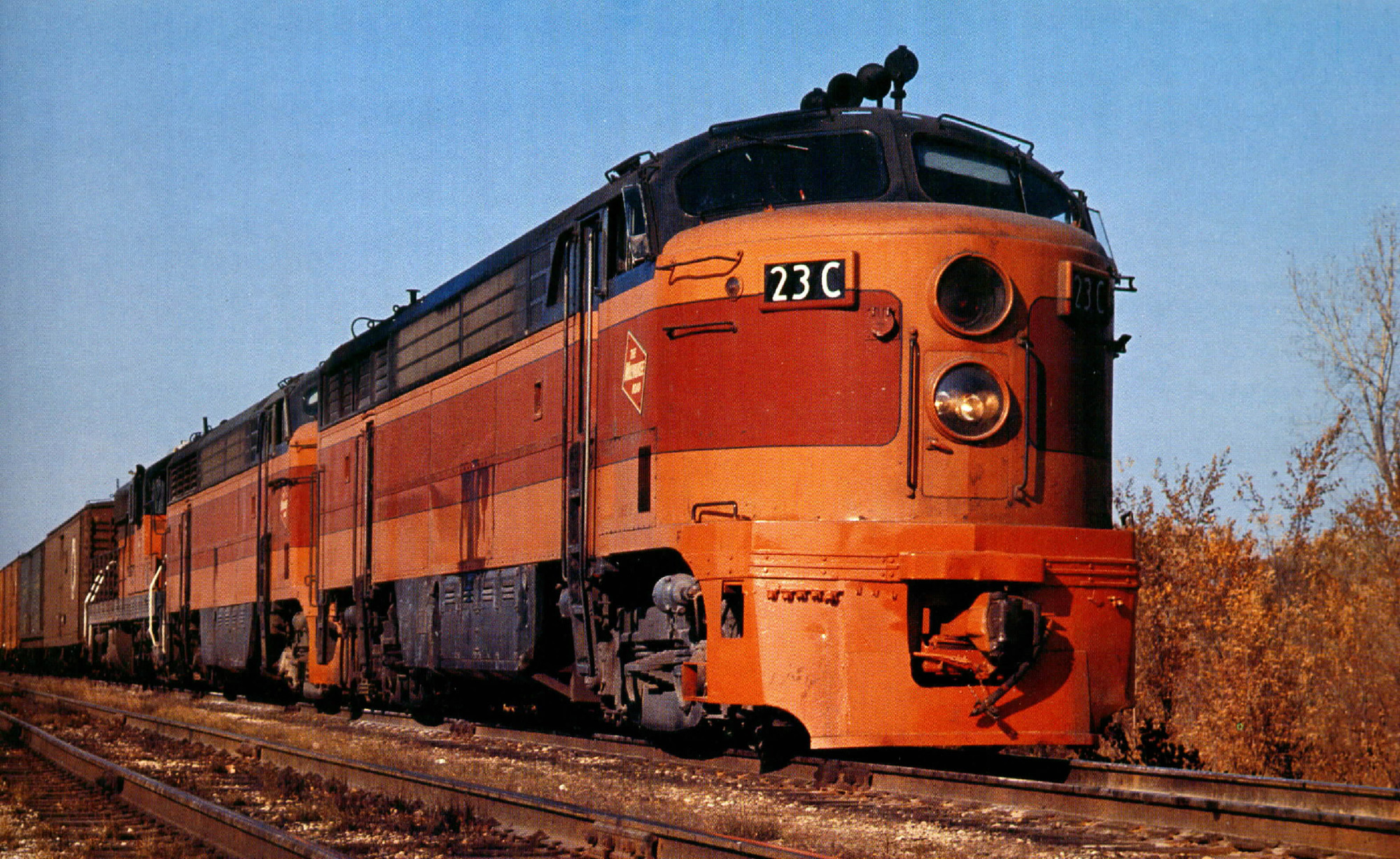Atlas - 2121 - Locomotive, Diesel, Fairbanks Morse, C-Liner - Santa Fe
Click to see the details
market
Click to see the details
history
| Stock Number | 2121 |
| Original Retail Price | $10.98 |
| Brand | Atlas |
| Manufacturer | Rivarossi |
| Body Style | Atlas Diesel Engine Fairbanks Morse C-Liner |
| Prototype Vehicle | Locomotive, Diesel, Fairbanks Morse, C-Liner (Details) |
| Road or Company Name | Santa Fe (Details) |
| Reporting Marks | ATSF |
| Paint Color(s) | Red, Silver, Yellow, Black |
| Print Color(s) | Black |
| Paint Scheme | Warbonnet |
| Coupler Type | Rapido Hook |
| Coupler Mount | Truck-Mount |
| Wheel Type | Nickel-Silver Plated Metal |
| Wheel Profile | Deep Flange |
| DCC Readiness | No |
| Release Date | 1967-01-01 |
| Item Category | Locomotives |
| Model Type | Diesel |
| Model Subtype | Fairbanks-Morse |
| Model Variety | C-Liner |
| Prototype Region | North America |
| Prototype Era | NA Era III: Transition (1939 - 1957) |
| Years Produced | 1950-1955 |
| Scale | 1/160 |
Specific Item Information:
This item was also cataloged as Rivarossi 9140
Model Information:
Introduced in 1967. Discontinued a decade later.
Pickup from rear truck while propulsion from front truck.
Vertically mounted 3 pole motor.
Either made by Rivarossi or Mehano, just look at the bottom of the fuel tank: "Atlas Made in Italy by RR" or "Atlas Yugoslavia".
Pickup from rear truck while propulsion from front truck.
Vertically mounted 3 pole motor.
Either made by Rivarossi or Mehano, just look at the bottom of the fuel tank: "Atlas Made in Italy by RR" or "Atlas Yugoslavia".
DCC Information:
Obviously DCC nothing.
Prototype History:
The Consolidated line, or C-line, was a series of diesel-electric railway locomotive designs produced by Fairbanks-Morse and its Canadian licensee, the Canadian Locomotive Company. Individual locomotives in this series were commonly referred to as “C-liners”. A combined total of 165 units (123 cab-equipped lead A units and 42 cabless booster B units) were produced by F-M and the CLC between 1950 and 1955.
The C-Liners replaced FM's earlier cab model the Erie-Built, which proved only marginally successful at best. The updated version of FM's cab locomotives did not feature a carbody nearly as elegant as the former, which sported a European look. It was offered for either passenger or freight (with four or five axles) service and intended to compete against Electro-Motive's (EMD) popular E and F series as well as Alco's FA and PA models. Unfortunately, the C-Liners saw about the same level of success as the Erie-Builts and FM canceled the line after only a few years of production.
All of the designs were based on a common 56 ft 3 in (17.15 m) carbody, but the customer could choose cab or booster units equipped with 1,600 hp (1.19 MW), 2,000 hp (1.49 MW), or 2,400 hp (1,800 kW) opposed piston engine prime movers. Each option was also offered in both passenger and freight configurations.
All freight units, and the CLC-built Model CPA/B-16-4 were designed with a B-B wheel arrangement, while passenger units (in addition to having different gearing) featured an unusual B-A1A wheel configuration, as the rear truck required an extra unpowered axle to help distribute the weight of the steam generator.
The models produced comprise: CFA-16-4 (cabs) and CFB-16-4 (cabless boosters), CFA-20-4 (cabs) and CFB-20-4 (cabless boosters), CPA-20-5 (cabs), CPA-24-5 (cabs), CPA-16-4 (cabs), CPA-16-5 (cabs) and CPB-16-5 (cabless boosters).
Using the CFA16-4 as an example the "C" referred to cab unit, "F" listed it for freight service, "A" was a designation for A unit, "16" was short for 1,600 hp, and "4" was the number of axles it carried.
From Wikipedia
Read more on American-Rails.com
The C-Liners replaced FM's earlier cab model the Erie-Built, which proved only marginally successful at best. The updated version of FM's cab locomotives did not feature a carbody nearly as elegant as the former, which sported a European look. It was offered for either passenger or freight (with four or five axles) service and intended to compete against Electro-Motive's (EMD) popular E and F series as well as Alco's FA and PA models. Unfortunately, the C-Liners saw about the same level of success as the Erie-Builts and FM canceled the line after only a few years of production.
All of the designs were based on a common 56 ft 3 in (17.15 m) carbody, but the customer could choose cab or booster units equipped with 1,600 hp (1.19 MW), 2,000 hp (1.49 MW), or 2,400 hp (1,800 kW) opposed piston engine prime movers. Each option was also offered in both passenger and freight configurations.
All freight units, and the CLC-built Model CPA/B-16-4 were designed with a B-B wheel arrangement, while passenger units (in addition to having different gearing) featured an unusual B-A1A wheel configuration, as the rear truck required an extra unpowered axle to help distribute the weight of the steam generator.
The models produced comprise: CFA-16-4 (cabs) and CFB-16-4 (cabless boosters), CFA-20-4 (cabs) and CFB-20-4 (cabless boosters), CPA-20-5 (cabs), CPA-24-5 (cabs), CPA-16-4 (cabs), CPA-16-5 (cabs) and CPB-16-5 (cabless boosters).
Using the CFA16-4 as an example the "C" referred to cab unit, "F" listed it for freight service, "A" was a designation for A unit, "16" was short for 1,600 hp, and "4" was the number of axles it carried.
From Wikipedia
Read more on American-Rails.com
Road Name History:
The Atchison, Topeka and Santa Fe Railway (reporting mark ATSF), often abbreviated as Santa Fe or AT&SF, was one of the larger railroads in the United States. Chartered in February 1859, the railroad reached the Kansas-Colorado border in 1873 and Pueblo, Colorado, in 1876. To create a demand for its services, the railroad set up real estate offices and sold farm land from the land grants that it was awarded by Congress. Despite the name, its main line never served Santa Fe, New Mexico, as the terrain was too difficult; the town ultimately was reached by a branch line from Lamy.
The Santa Fe was a pioneer in intermodal freight transport, an enterprise that (at one time or another) included a tugboat fleet and an airline (the short-lived Santa Fe Skyway). Its bus line extended passenger transportation to areas not accessible by rail, and ferryboats on the San Francisco Bay allowed travelers to complete their westward journeys to the Pacific Ocean. The ATSF was the subject of a popular song, Harry Warren & Johnny Mercer's "On the Atchison, Topeka and the Santa Fe", written for the film, The Harvey Girls (1946).
The railroad officially ceased operations on December 31, 1996, when it merged with the Burlington Northern Railroad to form the Burlington Northern & Santa Fe Railway.
Read more on Wikipedia.
The Santa Fe was a pioneer in intermodal freight transport, an enterprise that (at one time or another) included a tugboat fleet and an airline (the short-lived Santa Fe Skyway). Its bus line extended passenger transportation to areas not accessible by rail, and ferryboats on the San Francisco Bay allowed travelers to complete their westward journeys to the Pacific Ocean. The ATSF was the subject of a popular song, Harry Warren & Johnny Mercer's "On the Atchison, Topeka and the Santa Fe", written for the film, The Harvey Girls (1946).
The railroad officially ceased operations on December 31, 1996, when it merged with the Burlington Northern Railroad to form the Burlington Northern & Santa Fe Railway.
Read more on Wikipedia.
Brand/Importer Information:
In 1924 Stephan Schaffan, Sr. founded the Atlas Tool Company in Newark, New Jersey. In 1933 his son, Stephan Schaffan, Jr., came to work for his father at the age of sixteen. Steve Jr. built model airplanes as a hobby and frequented a local hobby shop. Being an enterprising young man, he would often ask the owner if there was anything he could do to earn some extra spending money. Tired of listening to his requests, the hobby-store owner threw some model railroad track parts his way and said, "Here, see if you can improve on this".
In those days, railroad modelers had to assemble and build everything from scratch. Steve Jr. created a "switch kit" which sold so well, that the entire family worked on them in the basement at night, while doing business as usual in the machine shop during the day.
Subsequently, Steve Jr. engineered the stapling of rail to fiber track, along with inventing the first practical rail joiner and pre-assembled turnouts and flexible track. All of these products, and more, helped to popularize model railroading and assisted in the creation of a mass-market hobby. The budding entrepreneur quickly outgrew the limitations of a basement and small garage operation. Realizing they could actually make a living selling track and related products, Steve and his father had the first factory built in Hillside, New Jersey at 413 Florence Avenue in 1947. On September 30, 1949, the Atlas Tool Company was officially incorporated as a New Jersey company.
In 1985, Steve was honored posthumously for his inventions by the Model Railroad Industry Association and was inducted into the Model Railroad Industry Hall of Fame in Baltimore, Maryland. In addition, Steve was nominated and entered into the National Model Railroad Association Pioneers of Model Railroading in 1995.
In the early 1990s, the Atlas Tool Company changed its name to Atlas Model Railroad Company, Inc.
In those days, railroad modelers had to assemble and build everything from scratch. Steve Jr. created a "switch kit" which sold so well, that the entire family worked on them in the basement at night, while doing business as usual in the machine shop during the day.
Subsequently, Steve Jr. engineered the stapling of rail to fiber track, along with inventing the first practical rail joiner and pre-assembled turnouts and flexible track. All of these products, and more, helped to popularize model railroading and assisted in the creation of a mass-market hobby. The budding entrepreneur quickly outgrew the limitations of a basement and small garage operation. Realizing they could actually make a living selling track and related products, Steve and his father had the first factory built in Hillside, New Jersey at 413 Florence Avenue in 1947. On September 30, 1949, the Atlas Tool Company was officially incorporated as a New Jersey company.
In 1985, Steve was honored posthumously for his inventions by the Model Railroad Industry Association and was inducted into the Model Railroad Industry Hall of Fame in Baltimore, Maryland. In addition, Steve was nominated and entered into the National Model Railroad Association Pioneers of Model Railroading in 1995.
In the early 1990s, the Atlas Tool Company changed its name to Atlas Model Railroad Company, Inc.
Item created by: gdm
on 2016-03-21 13:28:52
Last edited by: klausnahr on 2022-01-15 14:56:05
If you see errors or missing data in this entry, please feel free to log in and edit it. Anyone with a Gmail account can log in instantly.
Last edited by: klausnahr on 2022-01-15 14:56:05
If you see errors or missing data in this entry, please feel free to log in and edit it. Anyone with a Gmail account can log in instantly.


